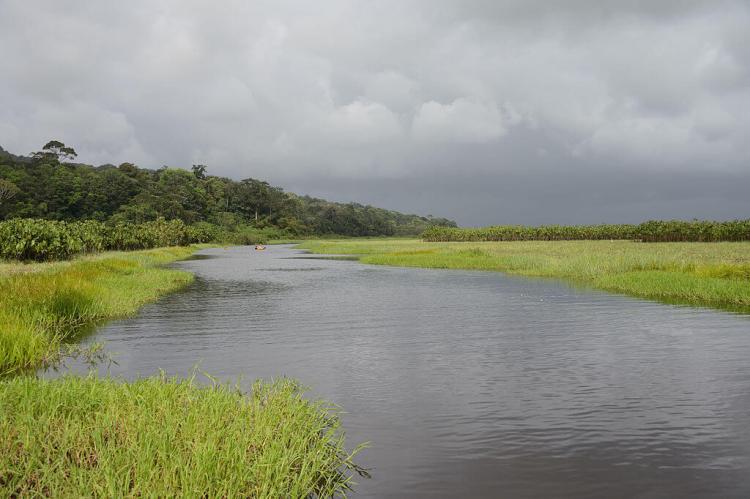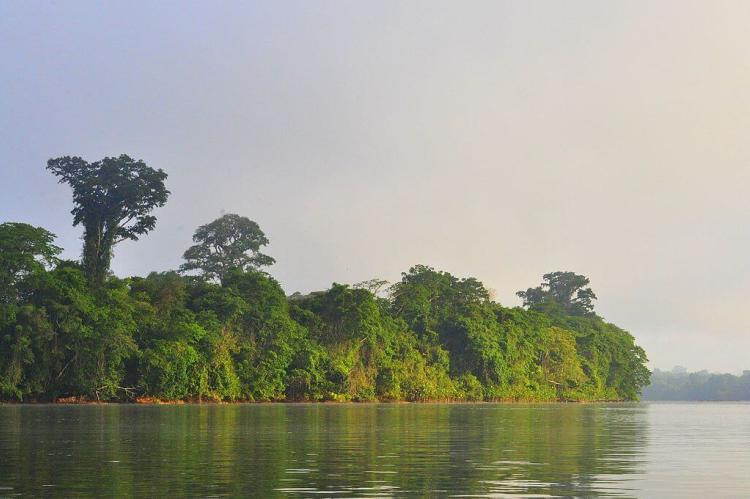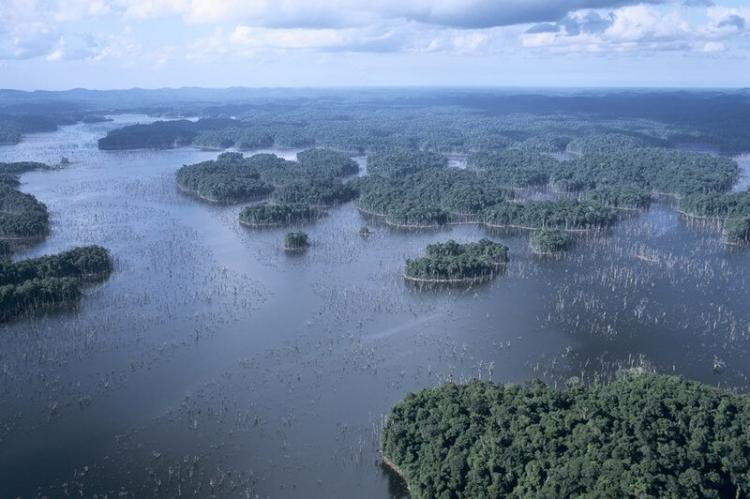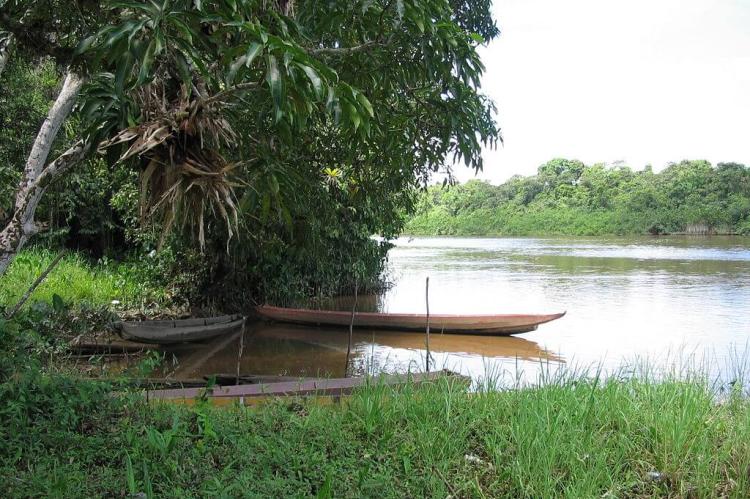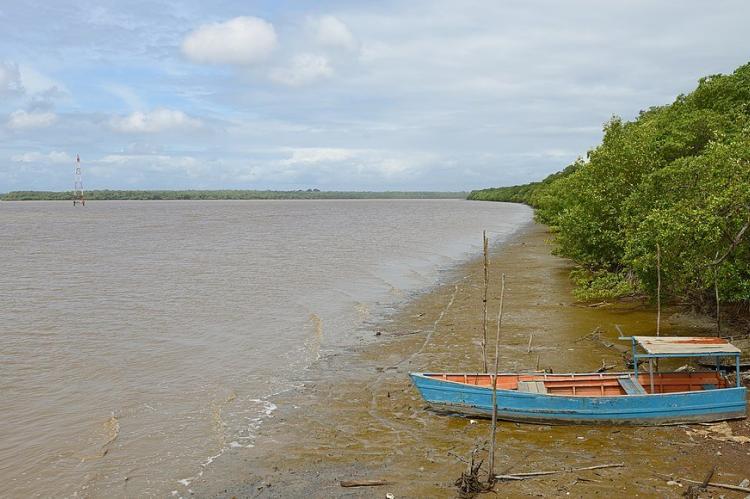Water Bodies of French Guiana
French Guiana hosts diverse bodies of water, contributing to its unique ecological and cultural landscape. These water bodies are essential in supporting local communities, sustaining biodiversity, and providing opportunities for ecotourism, fishing, and other recreational activities.
Water Bodies of French Guiana
French Guiana, situated on the northeastern coast of South America, has diverse bodies of water contributing to its unique ecological and cultural landscape. From meandering rivers like the Maroni and Oyapock, which form natural borders with neighboring countries, to serene lakes such as Laussat and Vieux Saramea, nestled within lush rainforests, the region is rich in aquatic diversity. The coastal areas are bordered by the Atlantic Ocean, offering stunning beaches and estuaries teeming with marine life.
These are some of the notable bodies of water in French Guiana, each contributing to the region's rich biodiversity, cultural significance, and recreational opportunities.
Notable Rivers and Wetlands
Maroni River: The Maroni River is one of the major rivers in French Guiana, forming part of the border between Suriname and French Guiana. It originates in the Tumuc-Humac Mountains and flows through lush rainforests before emptying into the Atlantic Ocean. The Maroni River is significant for local indigenous communities' transportation, trade, and sustenance.
Oyapock River: The Oyapock River is an important river that forms the border between French Guiana and Brazil. It flows through a remote and pristine region that includes the Guiana Amazonian Park, offering opportunities for ecotourism and adventure activities. The river's basin is known for its rich biodiversity and cultural diversity.
Cayenne River: The Cayenne River is a significant waterway in French Guiana, with its mouth located near the capital city of Cayenne. It flows through the region's heart, serving as a vital route for transportation and supporting various economic activities. The river's estuary also plays a crucial role in the local fishing industry and provides access to the Atlantic Ocean.
Sinnamary River: The Sinnamary River is situated in the eastern part of French Guiana and flows into the Atlantic Ocean. Dense rainforests surround it, and it is a popular destination for birdwatching and wildlife observation. The river's estuary is crucial for fisheries and supports various marine species.
Approuague River: The Approuague River is located in the central part of French Guiana and runs north from the Tumuk Humak Mountains to the Atlantic Ocean. Known for its striking blue waters, it provides opportunities for kayaking and other water sports amidst a pristine natural environment.
Mana River: The Mana River is located in the western part of French Guiana. It is known for its biodiversity and runs through the Mana Reserve, a protected area that supports various plant and animal species.
Kaw River: The Kaw River is one of the main rivers in French Guiana, flowing through the Kaw Swamp and the town of Kaw. It is an essential waterway for local communities and supports diverse flora and fauna.
Kaw Swamp: The Kaw Swamp is a vast wetland area near the Kaw River. It is home to diverse plant and animal species, including many endemic and endangered species. The swamp is a protected area and supports scientific research and ecotourism activities.
Kourou River: The Kourou River runs through the town of Kourou, where the Guiana Space Centre, a major spaceport, is located. The river's estuary is an essential breeding ground for fish and other aquatic organisms.
Iracoubo River: The Iracoubo River is a smaller river in northern French Guiana. It is known for its picturesque surroundings and opportunities for fishing and birdwatching.
Orapu River: The Orapu River is located in western French Guiana and flows through the remote and pristine rainforests of the Tumuc-Humac Mountains.
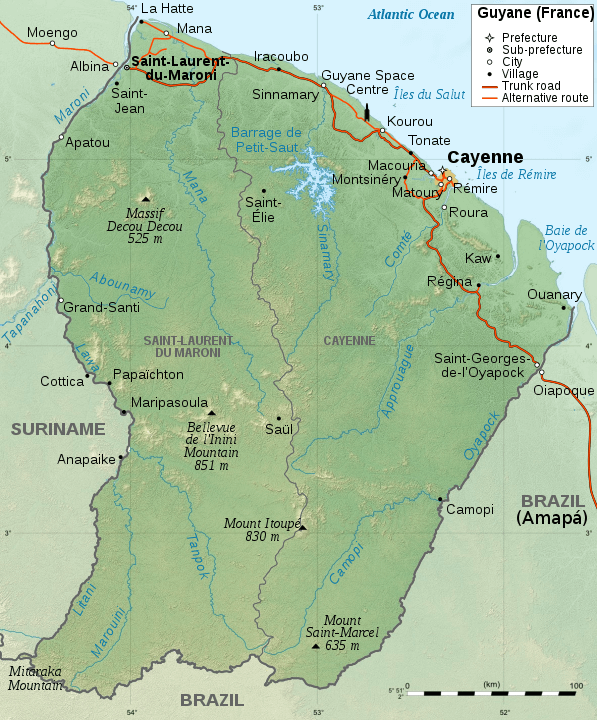
Geographic map of French Guiana.
Notable Canals
Canal Laussat: The Canal Laussat is a historical canal in the capital city of Cayenne, French Guiana. It was constructed during the French colonial period in the early 19th century. The canal was initially used for transportation and was a vital route for the city's economic and commercial activities. Today, portions of the canal have been preserved as part of the city's cultural heritage and are popular for tourists and locals to explore.
Canal de la Republique: The Canal de la Republique is another significant canal in Cayenne. It was built during the French colonial era to improve the city's drainage and sanitation systems. The canal helps manage stormwater runoff during heavy rain and prevents flooding in low-lying areas of the city.
Canal de Degrad-des-Cannes: The Canal de Degrad-des-Cannes is a canal system that runs through the town of Degrad-des-Cannes, located near Cayenne. It is primarily used for drainage and water management, helping to control water levels in the area's agricultural fields and residential neighborhoods.
Canal du Larivot: The Canal du Larivot is an essential waterway in French Guiana. It is used for transportation and navigation through the region's inland water bodies. It is also used for water supply and is an essential source of fresh water for local communities.
Notable Lakes
Comté Lake: Comté Lake is a large lake situated in the coastal plains of French Guiana, near the town of Sinnamary. The lake is rich in aquatic life and attracts migratory birds, making it a significant area for birdwatchers.
Laussat Lake: Laussat Lake is a large natural lake located in the southwestern part of French Guiana. It is known for its picturesque landscapes and as an essential water source for the surrounding ecosystem.
Vieux Saramea Lake: Vieux Saramea Lake is a small lake in the central part of French Guiana. It is surrounded by lush vegetation and provides a serene setting for relaxation and birdwatching.
Yiyi Lake: Yiyi Lake is a remote lake in the eastern part of French Guiana. It is known for its pristine environment and is a popular destination for ecotourism and nature enthusiasts.
Patawa Lake: Patawa Lake is a natural lake in the southern part of French Guiana. It is part of a protected area and supports diverse wildlife, making it an ideal spot for nature observation.
Petit Inini Lake: Petit Inini Lake is a small lake in the western part of French Guiana. It is surrounded by dense rainforest and is part of a pristine natural environment.
Bois Diable Lake: Bois Diable Lake is in the eastern part of French Guiana, near Regina. Beautiful landscapes surround it, making it a popular spot for fishing and picnicking.
Ayawanna Lake: Ayawanna Lake is a remote lake in northeastern French Guiana. It is surrounded by dense rainforest and offers opportunities for wilderness exploration.
Petit Itany Lake: Petit Itany Lake is a small lake in the western part of French Guiana. It is surrounded by lush vegetation and is part of the Kaw Mountain Range.
Maroni River Reservoir (Petit Saut): The Petit Saut Reservoir is an artificial lake formed by the Petit Saut Dam on the Maroni River. It is known for its hydroelectric power generation and supports various water-related activities.
